He and his family not only came to the Hulbert
vacation home to stay a whole month during the vacation season but he virtually
brought his house with him in the form of his circus tent and he also brought
two-and-a-halftons
of possessions. He wanted them to know that the had money, he was no longer
dependent on them.
Sitting with the family he could casually let drop the
fact that he, Emma and the kids were taking a year off leaving for the
coast from Coldwater.
Having cleansed himself of his sense of guilt in Coldwater
and Detroit he returned to Chicago where a few days later the family began
its incredible cross-country journey.
Having now reached his psychological crisis Burroughs'
literary fecundity received a check. From March 1916 to January 1917 Burroughs
wrote nothing but some short stories about Tarzan (Jungle Tales of Tarzan)
to which he was already committed. The first six months of 1917 were devoted
to writing "Bridge and the Oskaloosa Kid." The rest of 1917 and the first
seven months of 1918 were devoted to penning his trilogy of novellas: The
Land That Time Forgot.
These two works are pivotal to understanding Burroughs.
Writing effortlessly before the period, composition now became more laborious.
Just as the epic of Jack Johnson was central to The
Mucker and "Out There Somewhere," the saga of the IWW, the Industrial
Workers of the World or Wobblies,
as they were popularly known, was the political theme between these two
later works.
What path is left for you to tread
When hunger wolves are slinking near --
Do you not know the West is dead?
The "blanket-stiff" now packs his bed
Along the trail of yesterday --
What path is left for you to tread?
Your fathers, gold sunsets led
To virgin prairies wide and clear --
Do you not know the West is dead?
Now dismal cities rise instead
And freedom is not there nor here --
What path is left for you to tread?
Your father's world, for which they bled,
Is fenced and settled far and near --
Do you not know the West is dead?
Your fathers gained a crust of bread
Their bones bleach on the lost frontier;
What path is left for you to tread --
Do you not know the West is dead?
~ Anon. As quoted by Ralph Chaplin in his
autobiography:
Wobbly
The Wobblies are nearly forgotten now but they were of supreme
importance in the second decade of the twentieth century here in the United
States.
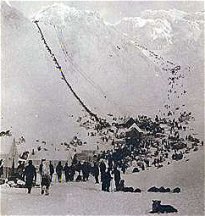 Reverting
to the prologue. The great Klondike gold strike was the last of the gold
rushes. It was where the West died for these men. The hordes of displaced
men who teemed the Chilkoot
Pass at the turn of the century had drifted away, but where and to
what? You don't think they got a job, do you? Their dreams of striking
it rich were dashed forever, the West was dead. The bindle-stiffs milled
around not knowing where to go next. The Big Rock Candy Mountain faded
from the horizon into the mists of mythology, nearly forgotten today. Even
as the century turned in the United States the great mining corporations
had ousted the itinerant prospector although many still roamed the West.
Some like Edward
Doheny, then of Los Angeles, who had lost his properties in Mexico,
had given up hard prospecting for the oil fields.
Reverting
to the prologue. The great Klondike gold strike was the last of the gold
rushes. It was where the West died for these men. The hordes of displaced
men who teemed the Chilkoot
Pass at the turn of the century had drifted away, but where and to
what? You don't think they got a job, do you? Their dreams of striking
it rich were dashed forever, the West was dead. The bindle-stiffs milled
around not knowing where to go next. The Big Rock Candy Mountain faded
from the horizon into the mists of mythology, nearly forgotten today. Even
as the century turned in the United States the great mining corporations
had ousted the itinerant prospector although many still roamed the West.
Some like Edward
Doheny, then of Los Angeles, who had lost his properties in Mexico,
had given up hard prospecting for the oil fields.
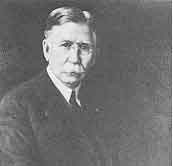 Those
restless souls ever in search of the fabled Mountain now roamed the West
only as hoboes, tramps and bums constantly on the move accepting whatever
transient jobs as harvesters, when they had to work, or handouts when they
didn't. That Big Rock Candy Mountain was now less than a shimmering mirage.
Those
restless souls ever in search of the fabled Mountain now roamed the West
only as hoboes, tramps and bums constantly on the move accepting whatever
transient jobs as harvesters, when they had to work, or handouts when they
didn't. That Big Rock Candy Mountain was now less than a shimmering mirage.
First in anger and frustration the hard rock miners --
hard rock as opposed to the soft coal miners -- had formed the Western
Federation of Miners operating mainly along the line of the Rockies.
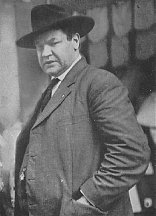 Among
their leaders was one Big Bill Haywood. Big Bill was native to the deserts
of Nevada when all was wild and access to the land restricted. He and his
kind liked it that way. In his youth he had had his own private diggings
to which he could go to repair his finances, not unlike Tarzan and the
fabulous vaults of Opar.
Among
their leaders was one Big Bill Haywood. Big Bill was native to the deserts
of Nevada when all was wild and access to the land restricted. He and his
kind liked it that way. In his youth he had had his own private diggings
to which he could go to repair his finances, not unlike Tarzan and the
fabulous vaults of Opar.
Then the mining corporations and land companies came in.
Big Bill lost his source of income as well as his homestead. He got bitter;
bitter and surly. He had been castrated in the psychological sense. Realizing
his impotence as an individual he formed the WFM. If there was no hope
of regaining his manhood individually, perhaps as a member of a group he
could.
Apparently given to extreme solutions, in other words,
he wanted to win, Big Bill was driven from the WFM.
About this time, 1905, the IWW with its notion of the
"One Big Union" came into existence. The IWW was composed of that type
of man who was off like a shot at the report of a gold strike away out
there beyond the West somewhere in the vicinity of that mythical range
of Big Rock Candy Mountains.
Unable to apply themselves to steady work while now denied
the hope of the Big Strike, these "men who don't fit in" abandoned pie
in the sky for a free lunch here on earth. They would band together to
take from society what they wanted if they couldn't hope for riches from
nature. The idea of the IWW as "One Big Union" was a strange one because
none of these men had steady jobs. The idea of a bunch of itinerant freight
train riders, fruit pickers and grain harvesters bringing society to its
knees to wrest a free living seems ludicrous on the face of it. Although,
at the present day the "homeless" who are successors to the hoboes have
a free lunch program in the Red city of San Francisco with the possibility
of taking over the town.
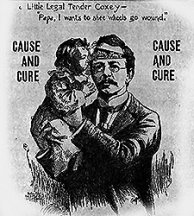 Needless
to say, many, if not most of these men were not averse to criminal activity
as Burroughs portrays them in "Out There Somewhere" and "Bridge and the
Kid." Burroughs traces them back to Coxey's
Army of 1894 when a man named Jacob Coxey organized these men and the
unemployed in a march on Washington to demand relief form the depression
of 1893.
Needless
to say, many, if not most of these men were not averse to criminal activity
as Burroughs portrays them in "Out There Somewhere" and "Bridge and the
Kid." Burroughs traces them back to Coxey's
Army of 1894 when a man named Jacob Coxey organized these men and the
unemployed in a march on Washington to demand relief form the depression
of 1893.
ERB apparently watched the hoboes closely both from a
disgust for them and a psychological affinity to them.
Bypassing the early stupendous adventures of the Western
Federation of Miners (in Colorado they're still mentally fighting those
wars) we will begin with the incredible Free Speech Movement of 1910-12.
The Berkeley Free Speech Movement of
the early 1960s was an echo of the Wobbly adventure.
As in the case of Big Bill Haywood in Nevada the Wobblies
took the seizure of mineral rights and the preemption of timber lands in
the West as a personal affront to them made by grabbers who had no legal
rights. There was a great deal of justice in their complaint for the mineral
corporations and the individuals who roped off the mines and timberlands
had no more just claim to them than these itinerants who were quite content
to leave the West free and untrammeled.
Well, the itinerants were reduced to accepting low wages
coupled with abominable working conditions while suffering the contempt
of the owners who they considered thieves.
Organizing, they then began to agitate. They began in
Spokane, orating from soap boxes on street corners. Their message was Red
Revolution -- no different than the Socialists who were organizing the
East. The Washingtonians forbade the Wobblies their constitutional right
to free speech driving them from the street corners.
The cry went out for all the hoboes to come to Spokane
to their assistance. Spokane was now overrun by itinerants as the Knights
of the Road responded to the call.
The attitude of the Washingtonians was punishing. Wobblies
were arrested by the hundred, thrown into unheated jails in the middle
of winter, which can get pretty cold in Spokane, where water hoses were
then turned on them. Many had their health broken for life. The civil rights
demonstrators in the South in the 1960s had it easy in comparison, there's
a big difference between being sprayed with a hose in hot Alabama and being
soused at zero degrees.
Their ire aroused, the Wobblies swore to fight to the
end. They became very active in the mining and timber camps of the Northwest
spreading a feeling of repugnance rather than fear. Everywhere they were
denied their constitutional rights. The South was never like this. Every
attorney in Portland, Oregon took an oath that he would refuse to defend
a Wobbly in court for any reason, thus they became outlaws -- fair game
for both police and private citizens.
Nothing daunted, the Wobblies moved down the coast to
Fresno in the fruit harvesting season, preventing the growers from harvesting
their crops. In those days, before Mexican braceros were brought up, the
crops were picked by itinerant Whites who were housed as poorly and cheated
as badly as the Mexicans, if not worse. Check out the story of the Wheatland
Strike. Whites have more compassion for other peoples and races than they
do for their own.
The Wobblies followed the same tactics in Fresno as they
had in Spokane. They were too many for the Californians, literally. The
expense of fighting and jailing them nearly bankrupted the city. Fresno
threw in the towel giving the victory to the Wobblies.
Heady with success the Wobblies now prepared to use the
same tactics on the city of San Diego. This was a serious tactical error.
Never use the same joke three times running. The San Diegans had been watching
quietly realizing that they would be next. They were ready for the Wobblies.
The advance guard slid into town to orate from street
corners. In order to foil the police they chained themselves to light poles
making it more difficult to remove them.
The logistical problem that the Wobblies didn't take into
consideration was that there ws only one rail line from LA to San Diego.
The Wobblies weren't suspicious when the railroad bulls allowed them free
access to the trains in LA. The bulls called ahead to San Diego to let
them know the Wobblies were on the way.
The San Diegans were prepared and mean as hell.
As the Wobblies tumbled from the boxcars, slid off the
top and crawled from the rods they were met by a posse swinging baseball
bats and rubber hoses. In the adjacent fields, men stood beside glowing
fires heating barrels of tar and branding irons which read IWW.
I think it's fair to say that Custer almost fared better
at the Little Big Horn. At least he didn't have to carry unpleasant memories
for years every time he looked at his ass.
A disheartened group of Wobblies moved up the tracks out
of town battered and bruised, tarred and feathered, many bearing a big
red glowing IWW on their buttocks.
Boy, I mean, you know, that hurts; that's castration,
it takes some of the fight out of you; changes your tactics; ruins your
sexual orientation.
That debacle occurred just before ERB took his first vacation
to San Diego in 1913. The subject was still a hot one so that he could
add that to his resentment of Coxey of 1894.
The year 1912 was a tough one for IWW. Ostensibly allied
with the Socialists, the IWW attended the convention of that year at which
they were thrown out of the coalition. The eastern Socialists were mainly
of the immigrant Jewish Group who wore suits. They were offended by these
Western hoboes with their talk of the Big Rock Candy Mountain now reduced
to the slogan "One Big Union."
When Wobblies broke into song with their anthem, "Hallelujah,
I'm A Bum," the Jewish Socialists refused to lift their voices in unison,
instead giving the hoboes the bum's rush. The Wobblies were ejected.
Meanwhile the WFM was having trouble with the Guggenheim
mining interests in Colorado. The Ludlow Massacre there was preceded by
another at Holly Grove, West Virginia. In that one the authorities had
made an armored train with which they crept up on the striking miners sleeping
in a field. Opening up with machine guns they cut right through the early
morning haze.
In 1914 the fracas ended in the Ludlow Massacre in Colorado
when the authorities once again machine gunned women and children. Let
the Civil Righters match that. Remembering Holly Grove, the miners had
wisely excavated the floors of their tents so the bullets whistled harmlessly
overhead. They had been wise enough but the pits were no defense against
the fire bombs which followed. Many women and children were incinerated.
They were all White Folks.
Then in 1916 the Everett, Washington massacre occurred
in which Wobblies traveling from Seattle to Everett by ferry were fired
on with some few killed and many others wounded.
These were scary and brutal times. The WFM and Wobblies
didn't give up. Hell no, they were brave and free Americans.
These were active times for the IWW as reflected in Burroughs'
last two parts of the Mucker Trilogy.

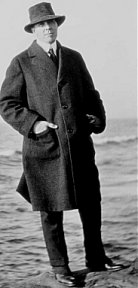
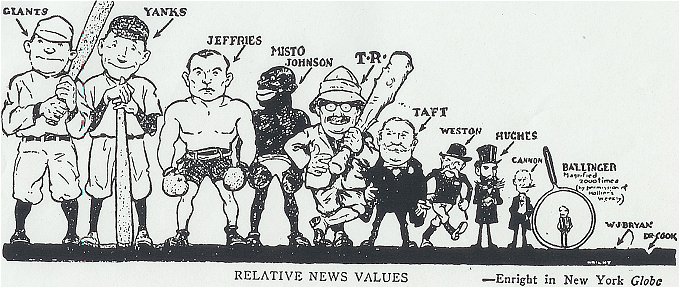
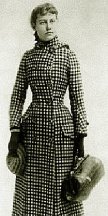
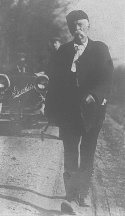
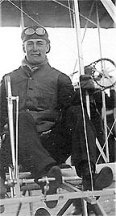
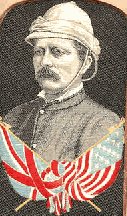
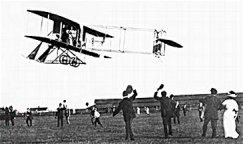
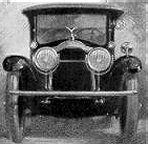
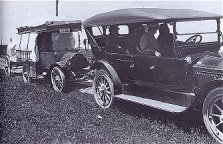
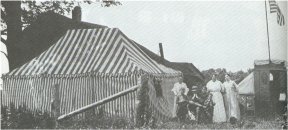



 Needless
to say, many, if not most of these men were not averse to criminal activity
as Burroughs portrays them in "Out There Somewhere" and "Bridge and the
Kid." Burroughs traces them back to
Needless
to say, many, if not most of these men were not averse to criminal activity
as Burroughs portrays them in "Out There Somewhere" and "Bridge and the
Kid." Burroughs traces them back to 